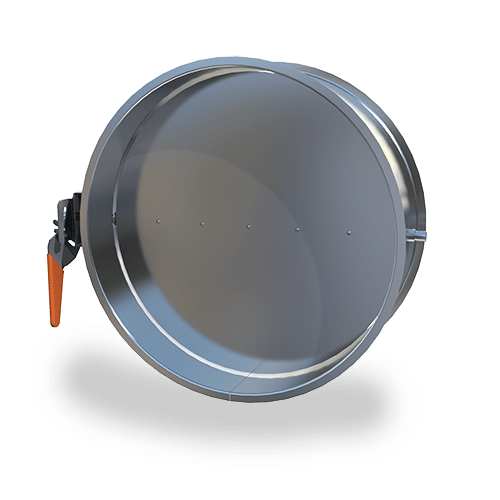When boilers operate, they rely on drafts to push combustion gases out of internal chambers so that they are safely and effectively vented to the outside. The regulation of drafts is critical to boiler performance; too little draft can cause overheating of combustion chambers, carbon monoxide leaks, and other dangerous equipment malfunctions. Too much draft can be costly– inefficient heating can lead to increased operating costs, and equipment lifespan is significantly reduced.
A mechanical draft is created by blowers and fans as opposed to environmental elements, commonly referred to as natural draft. Dampers are used to regulate mechanical draft and keep a heating system running safely and optimally. With a multiple boiler system, manual dampers are an ideal choice because they can be adjusted at each boiler and are therefore great for keeping the draft constant throughout a stack. With no manual dampers in place, it is actually very difficult to maintain consistency because the draft drops off the further you move away from a chimney stack. They are also great for adjusting airflow when external conditions affect draft. Therefore, as long as manual dampers are utilized properly, they are completely acceptable and suitable for mechanical draft applications.
Unlike manual draft dampers that need to be monitored and manually opened or closed, automatic vent dampers have a small motor that opens and shuts itself without human intervention. A programmed pressure sensor triggers these dampers to automatically adjust; they open when additional draft is needed and close to avoid over-draft. The overall function of automatic dampers is the same as the manual alternatives: regulating draft to vent combustion gases to the outside.
So, what are the benefits of using automatic dampers?
• Money savings: Once a boiler turns off, the damper closes, preventing escaping heat that can be used for heat recovery.
• Increased efficiency: Consistently regulating draft allows boilers to perform at maximum potential.
• Ease of use: Automatic dampers are self-regulated and can be controlled remotely if needed, eliminating the need for constant monitoring.
• Safety backup: A safety interlock closes when the damper is open and if the switch does not close, the burner will not ignite.
While the best type of damper for each HVAC installation varies depending on the specific conditions of the boiler system, automatic dampers are widely successful in balancing draft in an efficient and safe manner.
Our extensive line of ENERVEX products includes dampers suitable for any mechanical draft project. Contact UEP today, and let our engineers increase your boiler efficiency while taking the guess work out of installation.




